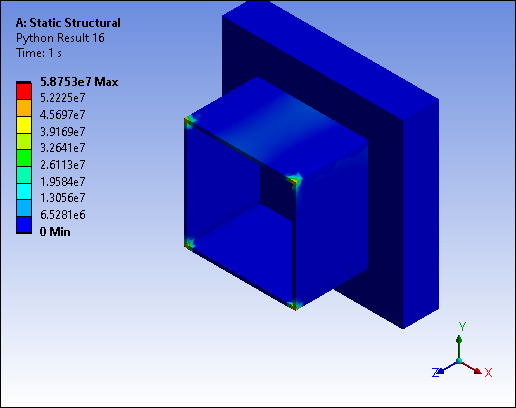This workflow enables you to read the stress tensors for a range of time steps from an analysis, to average those elemental nodal tensors to a nodal location, and to compute it's Von Mises equivalent. This workflow is an example of how to use the time scoping pin. This pin expects a scoping input and enables you to choose the time or frequency sets of the results.
import mech_dpf
import Ans.DataProcessing as dpf
my_data_sources = dpf.DataSources(analysis.ResultFileName)
my_time_scoping = dpf.Scoping()
my_time_scoping.Ids = [1] # the first set
s_eqv_op = dpf.operators.result.stress_von_mises()
s_eqv_op.inputs.requested_location.Connect('Nodal')
s_eqv_op.inputs.data_sources.Connect(my_data_sources)
s_eqv_op.inputs.time_scoping.Connect(my_time_scoping)
dpf_workflow = dpf.Workflow()
dpf_workflow.Add(s_eqv_op)
dpf_workflow.SetOutputContour(s_eqv_op)
dpf_workflow.Record('wf_id', True)
this.WorkflowId = dpf_workflow.GetRecordedId()

Beam Result Evaluation
To enable result evaluation on beams, you need to add the following three lines to the script:
s_eqv_op.inputs.requested_location.Connect('ElementalNodal')
s_eqv_op.inputs.read_beams.Connect(True)
dpf_workflow.SetOutputName(my_data_sources, "my_data_source")



